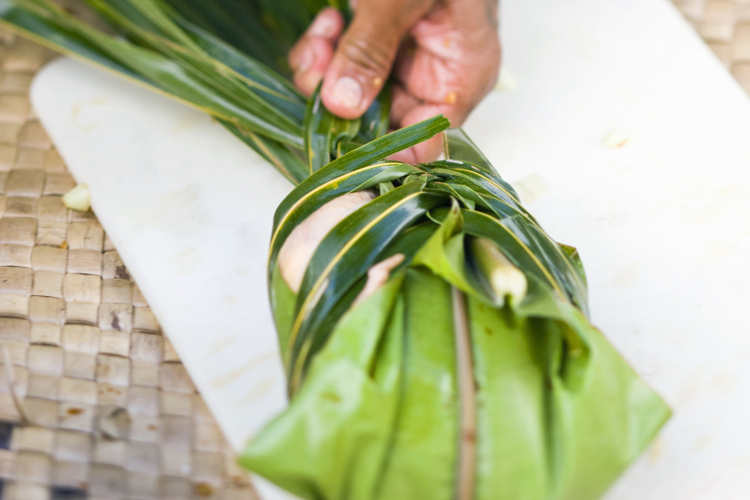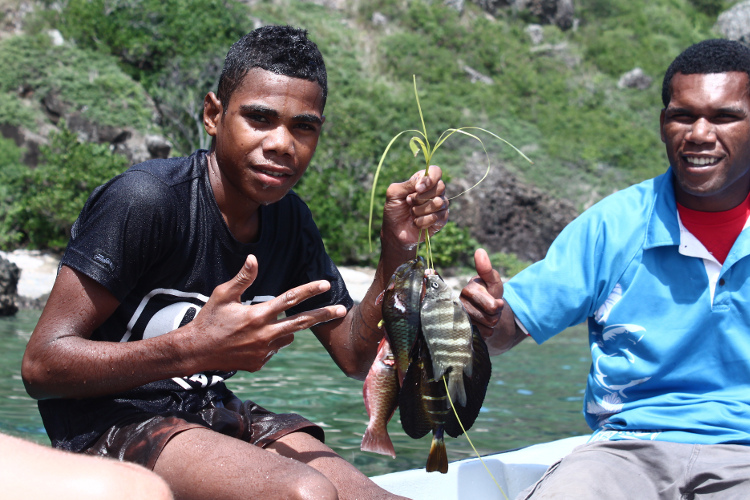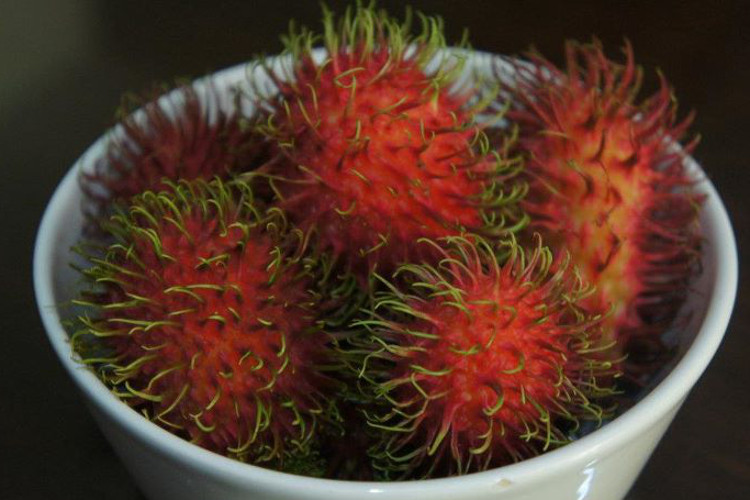Fiji it has more to offer the traveller than sailing, diving, swimming, fishing, rafting, parachuting, and pool lounging.... There's also the myriad foods and flavours to explore in this unique Pacific nation.

As a nation of islands the main form of protein in Fiji is seafood - naturally. There are many tours that will take you out on the water to try your hand at catching the meal of the day. Top spots include around the Kadavu group of islands, Taveuni or from the marina at Denarau on Vitu Levu.
Conserving local fishing stocks of dogtail tuna, giant trevally and red bass for future generations is a concern for local Fijians, sometimes even having to police local waters at night to protect these from illegal poaching.
In Fiji they eat their fish fried, baked, steamed in banana leaves, or lightly curried in fresh coconut cream.

Another popular ingredient, and one with no signs of depletion, is Fiji’s native tree fern, ota, which tastes like a bitter spinach after it’s been blanched in boiling water ready to eat. Starchy staples you’ll definitely see plated up with most cooked meals include roots like cassava, taro, and sweet potato as well as plantain, breadfruit and jackfruit.
The fruits you will eat in Fiji are mainly tropical and in addition to the more familiar pineapple, passionfruit, banana, watermelon and coconut on your plate you may be presented with some unfamiliar shapes and textures – ask your hosts if you’re unsure of anything. There’s nothing stranger than thinking you’re about to pop a sweet succulent slice of mango in your mouth and then finding your brain trying to make sense of the flavours of papaya instead.

Locally grown fruits include the apple-like kavika (the Malay rose apple), which is crisp and sweet with a hint of fragrant rosewater. The rambutan demands photographing: it looks more like a spiky sea creature than a fruit to pair with ice cream, but inside its red exterior is a melt-in-the-mouth white pulp that is sweet and wet like jelly with a pip in the middle.
Pomello, another top source of vitamin C (did we mention you’re going to feel like you’ve been at a health retreat after a few days eating in Fiji?), looks like a cross between a grapefruit and an ordinary orange but has a unique refreshing flavour. And kiwano, a knobbly fat yellow cucumber, is best eaten by scooping out the insides with a spoon and it tastes like a fleshy lime. Other tropical fruits you will come across include guava, cumquat, custard apple, tangerines, lychees and longans.
You cannot leave the country without going to at least one lovo – a traditional Fijian banquet not too dissimilar to a Maori hangi. An earth oven is created by digging a hole in the ground and filling it with a layer of banana leaves, hot stones and fire to prepare for the cooking of whole chickens, pork and root vegetables. The meat is slow cooked to pink perfection then enjoyed in a feast of sharing, drinking and Fijian style camaraderie.
A night at Taveuni Island Resort , a lush garden paradise in northwest of Fiji, left me so enamoured by the local cuisine I asked the generous and passionate proprietors to send me some recipes. Do try to do these at home (you may need to imagine the ocean breeze touching your skin and a sky lit up by a colourful sunset when you're enjoying these traditional dishes elsewhere).
Take a bunch of ota (wild fern) leaves and break off the tips of the fern fronds (these are around two inches long). Heat a pot of boiling water, add one teaspoon of baking soda. Blanch the ferns in boiling water for about one minute. Take out and cool in a bowl of ice.